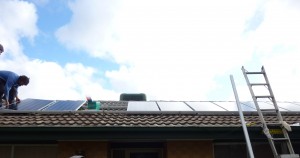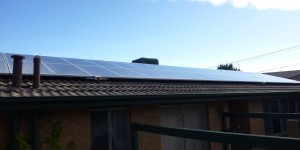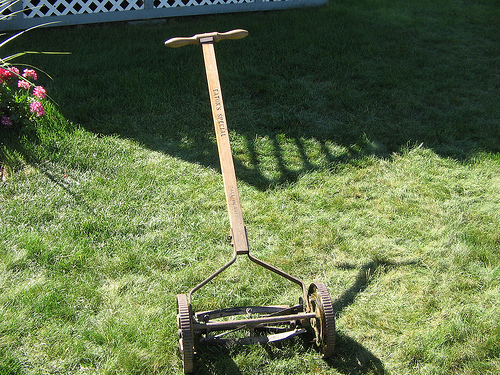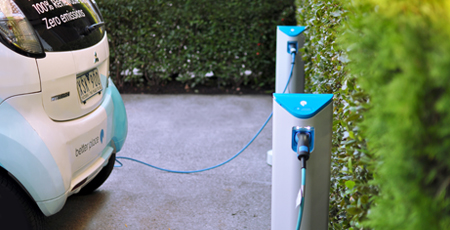(This article updated in May 2012)
It is is becoming more and more cost effective to install solar power in homes, around the world. This is not only because of the reduction in costs associated with building a rooftop solar power system (costs of PV solar panels dropped by around 50% in 2011 alone), but also because of government rebates and feed-in tariffs, which are now popular in many countries.
Nonetheless, it is estimated that photovoltaic solar systems’ share of global electricity generation in 2010 was 0.2%, with solar thermal energy even less.
Jump straight to the FAQ or read our story first…
We installed solar panels on our roof (well, we paid someone else to) last year. At the time there was a great feed-in tariff programme available here, which we were able to sign onto not long before it was closed to new home owners (due to over-subscription).

To choose a provider, we researched online, reading forum reviews and comments, as well as calling up three different companies for quotes. We ended up choosing the only one who actually sent someone out to talk to use in person and measure up our space (which was Armada Solar), which says something about the value of providing customer service probably, but we were very happy with the outcome.
Initially we planned to get a small system which we hoped to upgrade later, but when we looked into it a bit further, we decided to go for a really big system straight up. This ended up costing us more per kW because the Federal Government’s Solar Credits scheme only applies to the first 1.5 kilowatts (kW) of capacity (for systems connected to a main electricity grid). But, because of the great feed-in tariff programme, it was worth it.
Basically, we realised that a) upgrading later wouldn’t necessarily be as easy as we thought (see the question on this below), and b) even for a small system we were really going to need to borrow money, or we’d be using up every cent of our remaining savings (most of which we’d already used while I had been on unpaid maternity leave for the previous 14 months).
So we looked at the cost benefit of borrowing the money, and how long it would take to pay back if we put all the income generated on to loan payments (while we continued paying the normal amount of the electricity bill out of our budget). And what we discovered was that even though the cost per kW was higher after we went over the 1.5kW the solar credits scheme would help finance, the loan would still be paid off in less than 12 years, even if we covered one whole side of our roof with solar panels.

So in the end, that’s what we did. It didn’t really cost us anything (except the gamble of a bit more debt for a few years), we’re contributing a lot more ‘green energy’ to the grid, and and as a bonus, in about 12 years we’ll have an investment that will actually pay us money. The feed-in tariff is guaranteed for 20 years. No doubt the price of electricity will go up a lot in that time, but we’d be spending that money anyway, so we’re still ahead. And the price we’re getting is currently significantly more than we’re paying for electricity, plus we are generating far, far more than we use.
Of course, we do pay a little extra to buy 100% green energy (so that we aren’t selling the energy company our solar energy and buying back coal powered electricity in return!), but that is only a drop in the bucket compared to the return we are receiving.
In the ACT now, although the feed-in tariff program has closed, there is a solar buyback scheme, which means that any net energy produced will be bought from the home owner at their current tariff rate. At the same time, the cost of solar has dropped dramatically over the past year or two, so even with the buy back rate at parity, you may find your solar panels could pay for themselves relatively quickly. In some places feed-in tariffs are just being introduced, so it is well worth keeping track of what’s on offer in your area and getting in while the getting’s good!
Solar Power for Homes, FAQ
Is my home suitable for rooftop solar power installation? Can I generate enough solar power for my home?
This will depend on a number of factors including the orientation and size of your roof, the degree of sunshine in your location, the amount of shade, if any, that falls on your roof, and your energy needs.
The ideal situation for installing PV solar power for your home includes an unshaded, slanted, north facing roof in the Southern Hemisphere, or south facing roof in the Northern Hemisphere. It is worth noting that with technological improvements it is now possible for solar panels to generate electricity with some shading, however the efficiency of your system will certainly be reduced. That said, having an east-west facing roof may only reduce the energy of your system by around 20%, or less if tilting brackets are used.
In short, the suitability of your home is dependent on a number of factors and for a complete answer you should contact an installer close to you for individual advice.
How much will it cost?
In Australia, you are likely to pay anything from about $3500 to $40,000+, after government assistance, depending on the size of the system you want to install, and the location, for a grid-connected system. An off grid system will have higher installation costs because it also needs to be able to store the electricity generated.
Remember, that in addition to any rebates for solar power installation, you will be saving money on your electricity bill, and, in many parts of the world, earning money on any electricity fed back into the grid, often at a higher rate than you are paying when you draw money from the grid (when the sun is down, or your energy needs are higher than your out put).
If you are thinking of getting a solar power system installed, make sure you keep track of when goverment and utility company incentives are available, because they tend to have either a set budget or a set timeframe.
Solar power for home use is very cost effective over the long term, and can be even more effective if you pair it with other ways to save electricity.
Can I upgrade later?
Potentially you can, but again there isn’t a straight forward answer to this. If you have a sufficiently large inverter, you should be able to expand your array later, when you can afford to, or when your energy needs increase. But, if your inverter is too much larger than your current system requires, it will significantly decrease the efficiency of the whole system. Also, depending on how much later you wish to expand your system, you may not be able to get compatible solar panels, as the technology changes.
You can get a different or second inverter later, and this may be your best option.
Which system?
Rooftop solar power systems use photovoltaic panels, also called PV systems.* There are two categories of PV modules, wafer-based crystalline silicon and thin film systems. Crystalline silicon have been around for much longer and are still generally considered a better option in most circumstances.
Solar thermal energy is a different system altogether. PV solar panels convert sunlight directly to electricity, while solar thermal energy is used to heat water or air. This can be an end in itself, and solar thermal energy can be used to heat houses and of course is commonly used for solar hot water systems, and to heat pools. But it can also be used to generate electricity. In fact, solar thermal energy is cleaner (in terms of manufacturing processes) and more efficient than PV solar, but it is also more expensive, and as a way of generating electricity is not yet as common as photovoltaics.
Embodied energy, or environmental cost of installation
There is still a relatively high energy use in building solar panels, however the “payback” time in energy (as opposed to financially) is only about two to five years, which is far shorter than the twenty to thirty years you can expect your solar power system to last. Compare that to non-renewable energy systems which never achieve payback, as they continually need more resources to be pumped into them!
___________
*This is different to solar heating systems, such as solar hot water, which use the sun’s heat directly, rather than converting light into electricity. This is called solar thermal energy. You can also read our article about other forms of domestic solar power.
Primary sources: http://www.iea.org/textbase/nppdf/free/2006/renewenergy.pdf (3.29 MB)
http://www.iea.org/papers/2010/pv_roadmap_foldout.pdf (1.34 MB)





When someone writes an article he/she retains the plan of a user in his/her brain that
how a user can understand it. Thus that’s why this paragraph is perfect.
Thanks!
Thanks to continued growth and innovation in the solar industry, Solar system becomes a good solution which is kindly for the environment in cheap price. So do not need worry about the budget that we have to pay.
Hey,
I also appreciate solar panel users for their homes. Because they save money and electricity using this for their homes and also for anywhere business building they want to use. Thanks
This is the perfect blog for anyone who wants to know about solar power for homes. The article is nice and it’s pleasant to read. Thanks for sharing this.